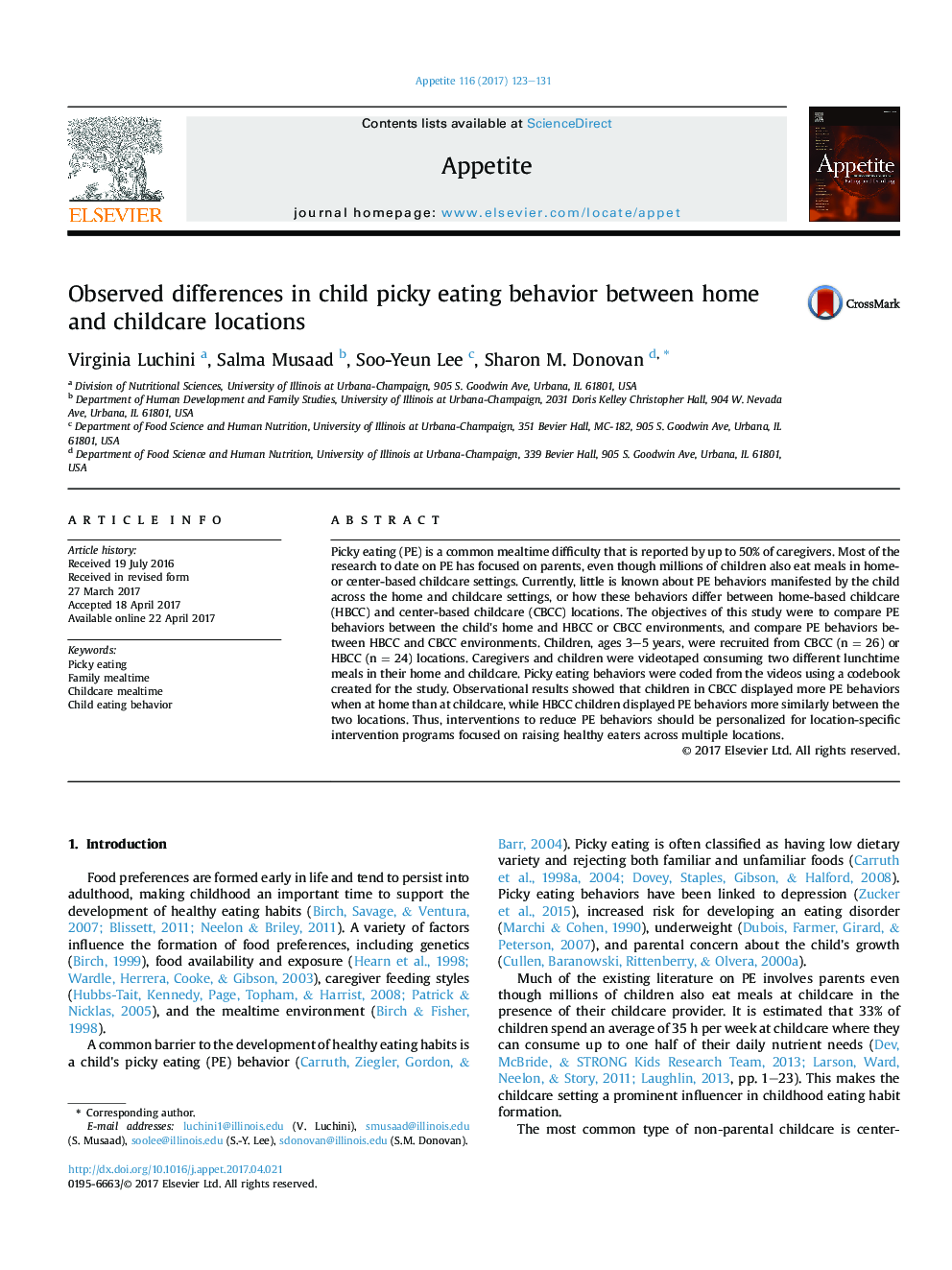| Article ID | Journal | Published Year | Pages | File Type |
|---|---|---|---|---|
| 5043990 | Appetite | 2017 | 9 Pages |
Picky eating (PE) is a common mealtime difficulty that is reported by up to 50% of caregivers. Most of the research to date on PE has focused on parents, even though millions of children also eat meals in home- or center-based childcare settings. Currently, little is known about PE behaviors manifested by the child across the home and childcare settings, or how these behaviors differ between home-based childcare (HBCC) and center-based childcare (CBCC) locations. The objectives of this study were to compare PE behaviors between the child's home and HBCC or CBCC environments, and compare PE behaviors between HBCC and CBCC environments. Children, ages 3-5 years, were recruited from CBCC (n = 26) or HBCC (n = 24) locations. Caregivers and children were videotaped consuming two different lunchtime meals in their home and childcare. Picky eating behaviors were coded from the videos using a codebook created for the study. Observational results showed that children in CBCC displayed more PE behaviors when at home than at childcare, while HBCC children displayed PE behaviors more similarly between the two locations. Thus, interventions to reduce PE behaviors should be personalized for location-specific intervention programs focused on raising healthy eaters across multiple locations.
